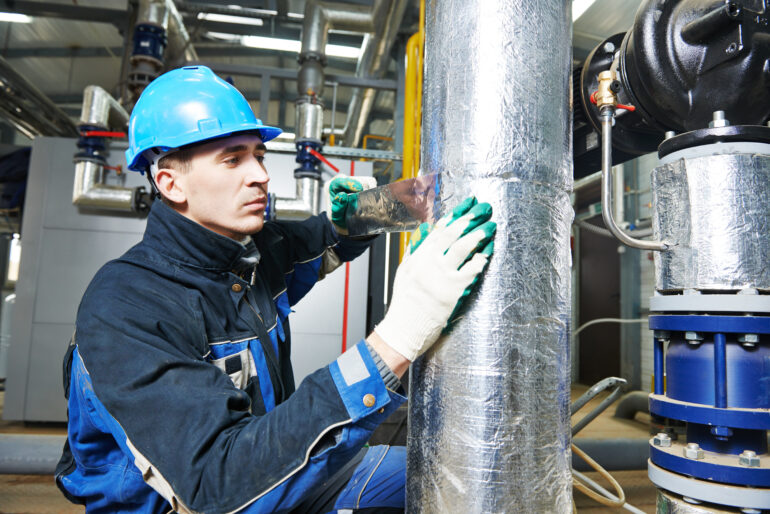Often, the role of the maintenance manager extends to cutting costs and choosing materials that support your company’s sustainability goals. Whether you are choosing insulation for a maintenance project or you are looking to upgrade your efficiency, there are a few things you can do to lower your costs and reduce your carbon footprint by lowering your energy consumption. Take a look at your pipe insulation as part of your fall maintenance checklist before the snow flies.
Saving money
Making sure you have the correct amount of insulation in your pipes is crucial for efficient performance, cutting HVAC costs, and avoiding pipe heat less. For your HVAC system to perform at its best, maintaining 1-2” insulation is optimal, so ensure you are within that realm for the maximum efficiency. Pipe insulation also lowers the risk of corrosion, which means less chance of damage and replacement in the long run.
You can save money with increased performance. For example, for about every 12 degrees you turn your water heater down, you can reduce your costs from three to five percent. So, along with looking at your insulation, prioritize efficiency by changing filters, adjusting the humidity settings, and having your HVAC inspected and serviced before the end of fall.
Your maintenance
Staying on top of the condition of your insulation is the key to consistent performance. Check on your pipe insulation each year to address any areas that need replacement before the temperatures drop.
Inspection and maintenance of your pipes can help mitigate the amount of condensation, which could lower the air quality in your building. As well, missing or damaged insulation means heating and cooling loss, upping your bills and lowering your system’s efficiency. In fact, wet insulation in your pipes and ductwork can lower your R-value by up to 40 per cent. Maintenance is an important part of keeping your pipes functioning consistently and efficiently.
Winter risks
Insulating your pipes can also help avoid having pipes bursting during the cold winter months. If they are not insulated, there is a good chance that the liquid within the pipes will freeze in the winter, which could cause splitting or bursting pipes. Pay special attention to areas that are unheated or exposed to the outdoors. Areas like exterior walls, warehouses, and other areas that may drop in temperature pose a risk for your pipes in the winter. These areas are especially important to insulate, as they are increased risks for pipe heat loss.
Getting ahead of an issue, taking the opportunity for cost savings, and cutting back on your environmental impact are all possible when your pipes are properly insulated. Before the cold weather hits, add pipe inspections to your scheduled maintenance plan to assess your pipe insulation and address any issues before they become costly concerns.








